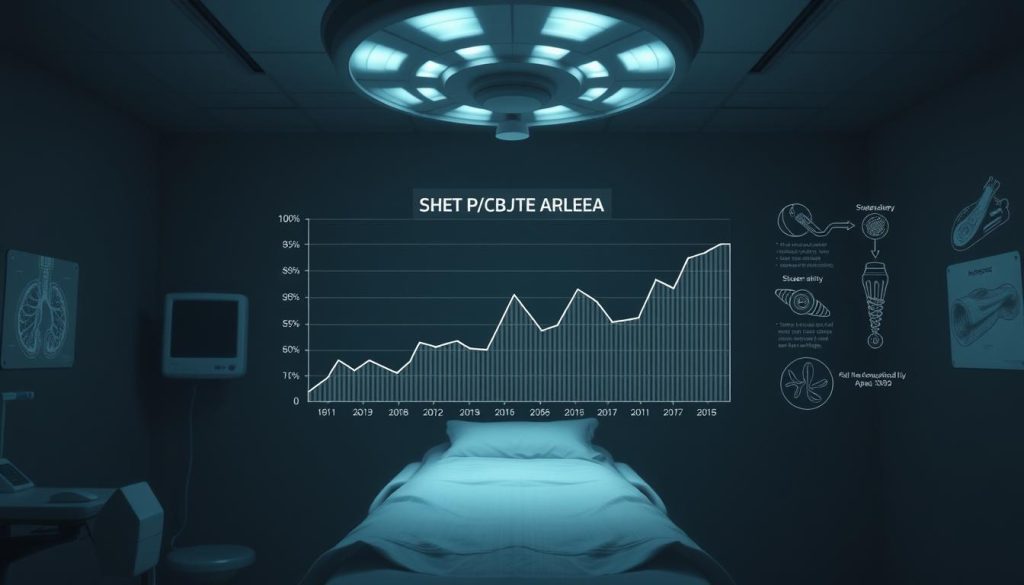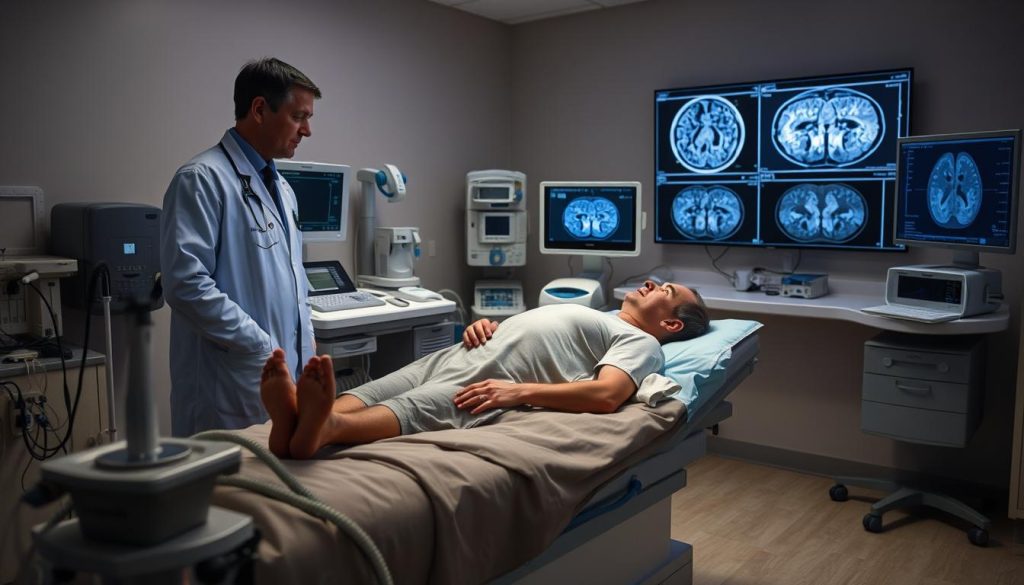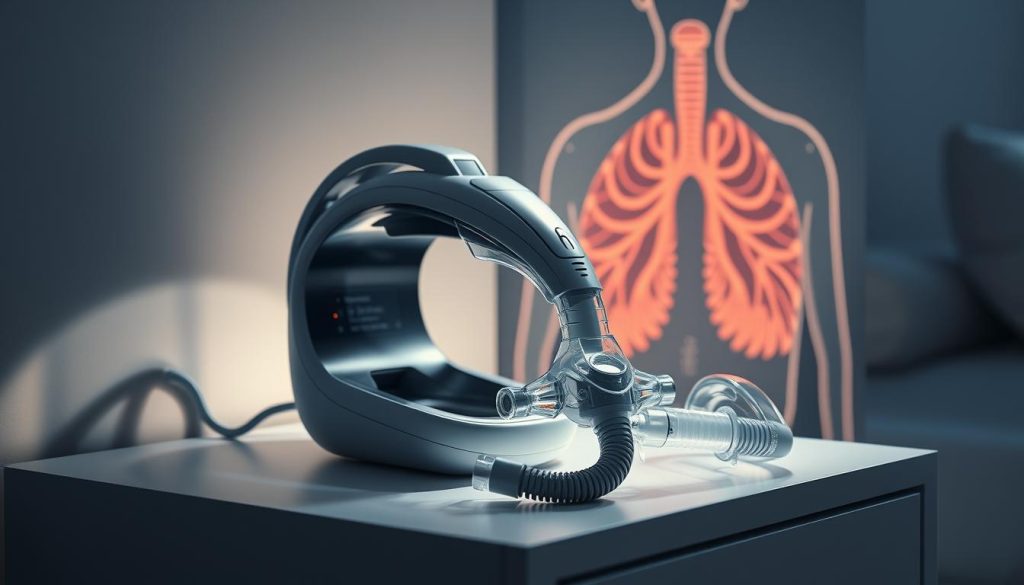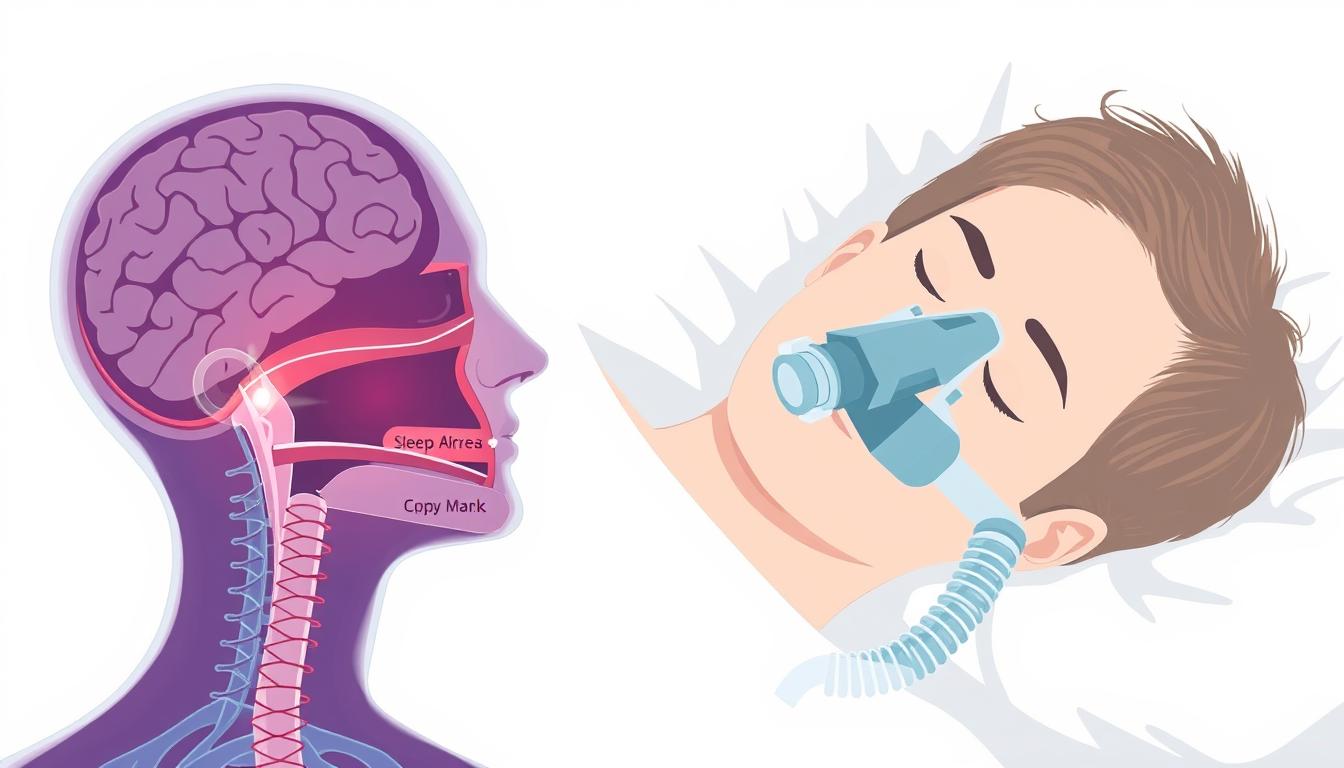Sleep apnea is a common disorder where breathing repeatedly stops and starts during rest. This condition can disrupt your nightly routine and lead to daytime sleepiness, making it hard to stay alert. It’s important to recognize how it affects your overall health.
When breathing pauses, oxygen levels in your blood drop, and carbon dioxide builds up. This imbalance can strain your body and increase the risk of other health issues. Understanding the basics of this condition helps you take the first step toward managing it effectively.
There are two main types: obstructive and central. Both involve interruptions in breathing, but they occur for different reasons. Learning about these types can help you identify symptoms and seek appropriate care.
By addressing sleep apnea early, you can improve your quality of life and protect your long-term health. Awareness is key to managing this condition and ensuring better rest.
What Is Sleep Apnea and Why It Matters?
Breathing interruptions during rest characterize this common condition. It occurs when the airway becomes blocked or the brain fails to send proper signals to the muscles controlling breath. These pauses can last for seconds or even minutes, disrupting rest and affecting overall health.
There are two main types: obstructive and central. Obstructive sleep apnea happens when the throat muscles relax, blocking the airway. Central sleep apnea occurs when the brain doesn’t send the right signals to the muscles that control breathing. Both types can lead to serious health issues if left untreated.
Defining Sleep Apnea
This disorder involves repeated pauses in breathing during rest. These interruptions can reduce oxygen levels in the blood, putting stress on the heart and other organs. Over time, this strain can lead to complications like high blood pressure and heart disease.
The Impact on Daily Life
Sleep apnea affects more than just rest quality. It can cause morning headaches, fatigue, and difficulty concentrating during the day. Bed partners may notice symptoms like loud snoring or gasping for air. These signs often prompt individuals to seek help.
| Type | Cause | Common Symptoms |
|---|---|---|
| Obstructive Sleep Apnea | Throat muscles block the airway | Snoring, gasping, daytime fatigue |
| Central Sleep Apnea | Brain fails to signal breathing muscles | Shortness of breath, insomnia |
Understanding this condition is the first step toward managing it. By recognizing the symptoms and seeking treatment, individuals can improve their quality of life and protect their long-term health.
Sleep Apnea Basics: Key Facts and Statistics
Many people experience breathing interruptions during rest, but few understand the underlying causes. These pauses, known as sleep apnea, can significantly impact health and daily life. Recognizing the types and risk factors is essential for managing this condition effectively.

Types of Sleep Apnea: Obstructive and Central
There are two primary types of this condition. Obstructive sleep apnea occurs when the airway is blocked, often due to relaxed throat muscles. Central sleep apnea happens when the brain fails to send proper signals to the muscles controlling breathing.
Both types lead to repeated pauses in breathing, reducing oxygen levels in the blood. This can strain the heart and other organs, increasing the risk of complications like high blood pressure and heart disease.
Prevalence and Risk Factors
Sleep apnea affects millions of people worldwide. In the U.S., it’s estimated that over 22 million adults have this condition, with many cases going undiagnosed. Globally, the numbers are even higher, making it a widespread health concern.
Several factors increase the risk of developing this disorder. These include:
- Age: The risk rises as people get older.
- Weight: Excess weight can contribute to airway blockage.
- Anatomical factors: A narrow airway or enlarged tonsils can play a role.
Understanding these risk factors can help individuals take preventive measures and seek timely treatment.
| Type | Cause | Common Symptoms |
|---|---|---|
| Obstructive Sleep Apnea | Blocked airway due to relaxed muscles | Loud snoring, gasping, daytime fatigue |
| Central Sleep Apnea | Brain fails to signal breathing muscles | Shortness of breath, insomnia |
By recognizing the types and risk factors, individuals can take proactive steps to manage this condition. Early intervention can improve quality of life and reduce the risk of long-term health issues.
Identifying Symptoms and Health Risks
Daytime fatigue and loud snoring can be early indicators of a deeper issue. Recognizing these signs is the first step toward addressing the problem. Many people overlook these symptoms, but they can signal serious health risks.
Common Signs to Watch For
Loud snoring is one of the most noticeable symptoms. It often occurs when the airway is partially blocked. Gasping for air during rest is another red flag, as it indicates breathing interruptions.
Daytime sleepiness is a common complaint. It happens because the condition disrupts rest, leaving individuals feeling tired during the day. Morning headaches and difficulty concentrating are also frequent symptoms.
Potential Complications and Comorbidities
Untreated, this condition can lead to serious health issues. High blood pressure is a common complication, as repeated pauses in breathing strain the heart. Over time, this strain increases the risk of heart disease and stroke.
Sleep studies play a crucial role in confirming these symptoms. They monitor breathing patterns and oxygen levels during rest. Abnormalities in the throat or airway often contribute to symptom severity.
Addressing these symptoms early can reduce long-term risks. By seeking help, individuals can improve their quality of life and protect their health.
Diagnostic Approaches and Sleep Studies
Accurate diagnosis is crucial for effective management of breathing interruptions during rest. Doctors use detailed assessments, including sleep studies, to identify the root cause of these pauses. Understanding the diagnostic process can help you take the first step toward better health.
Understanding Your Sleep Study
A sleep study, or polysomnography, is the most common diagnostic tool. It monitors your breathing, heart rate, and oxygen levels while you rest. This test helps doctors identify pauses in breathing and measure airflow through the airway.
Sleep studies can be conducted in a lab or at home. Lab studies provide detailed data, while home tests offer convenience. Both methods measure factors like pressure in the airway and the number of breathing interruptions per hour.
Other Testing Methods
In addition to polysomnography, doctors may use overnight oximetry. This test measures oxygen levels in your blood throughout the night. It’s a simpler alternative that can provide valuable insights into your breathing patterns.
Failure to diagnose correctly can delay treatment and worsen symptoms. Accurate testing ensures that the right treatment plan is tailored to your needs. Early diagnosis can improve your quality of life and reduce long-term health risks.
| Type of Study | Location | Benefits |
|---|---|---|
| Lab Sleep Study | Hospital or Clinic | Detailed data, comprehensive monitoring |
| Home Sleep Study | Your Home | Convenient, comfortable, cost-effective |
By understanding the diagnostic process, you can take an active role in managing your health. Whether through a lab or home study, accurate testing is the key to effective treatment.
Treatment Options for Obstructive Sleep Apnea
Managing obstructive sleep apnea effectively starts with understanding the available treatment options. This disorder, which causes repeated pauses in breathing, can be addressed through various methods. The goal is to improve airflow and reduce interruptions during rest.
Continuous Positive Airway Pressure (CPAP) Therapy
CPAP therapy is the most common treatment for obstructive sleep apnea. It uses a device to deliver continuous positive airway pressure, keeping the airway open. This prevents pauses in breathing and ensures steady airflow.
Adjusting the pressure settings is crucial for comfort and effectiveness. Many people find relief with CPAP, but it may take time to get used to the device. Trying different masks can help improve the experience.
Oral and Nasal Devices Explained
For those who prefer alternatives to CPAP, oral and nasal devices are available. These devices help keep the airway open by stabilizing the jaw or tongue. They are often custom-fitted to ensure proper alignment and comfort.
Factors like mouth anatomy and muscle relaxation play a role in choosing the right device. Some devices are designed to reduce snoring and improve breath control. Consulting a specialist can help determine the best option for your needs.
In some cases, surgery may be considered if other treatments are not effective. The goal is to address structural issues that contribute to airway blockage. Always discuss your options with a healthcare provider to find the right treatment plan.
Advanced Therapies for Central Sleep Apnea
Central sleep apnea, a condition where the brain fails to send proper signals to breathing muscles, requires specialized treatment. Unlike obstructive types, this disorder stems from neurological factors rather than airway blockage. Advanced therapies are now available to address these unique challenges effectively.

Adaptive Servo-Ventilation (ASV) Innovations
Adaptive Servo-Ventilation (ASV) is a cutting-edge therapy for central sleep apnea. This device monitors breathing patterns and adjusts airflow pressure in real time. It ensures steady breathing by compensating for pauses caused by the brain’s failure to signal muscles.
Studies show ASV is particularly effective for patients with heart failure, a common comorbidity. By stabilizing breathing, it reduces strain on the heart and improves overall health. ASV devices are designed for comfort, making them a popular choice for long-term use.
Non-Positive-Airway-Pressure Treatments
For those who prefer alternatives to positive airway pressure, non-PAP treatments are available. These methods focus on addressing underlying factors like heart and muscle function. For example, medications that stimulate breathing or treat heart failure can be effective.
Another option is the use of devices that monitor oxygen levels and adjust breathing patterns. These tools are less invasive and can be tailored to individual needs. Research indicates that combining therapies often yields the best results.
| Treatment Type | How It Works | Best For |
|---|---|---|
| Adaptive Servo-Ventilation (ASV) | Adjusts airflow pressure in real time | Patients with heart failure |
| Non-PAP Therapies | Targets heart and muscle factors | Those seeking non-invasive options |
Advanced therapies for central sleep apnea are transforming patient care. By addressing the root causes and offering tailored solutions, these treatments improve quality of life and reduce long-term health risks.
Lifestyle Changes and Preventative Measures
Making small but impactful lifestyle changes can significantly improve your ability to manage sleep apnea. These adjustments not only reduce symptoms but also enhance overall health. By focusing on diet, exercise, and sleep habits, you can take control of your well-being.
Diet, Exercise, and Weight Management
Maintaining a healthy weight is one of the most effective ways to reduce the risk of sleep apnea. Excess weight can put pressure on your airway, making it harder to breathe during rest. Regular exercise helps tone muscles, including those in your throat, which can keep the airway open.
Diet also plays a crucial role. Avoiding heavy meals and alcohol before bed can improve sleep quality. Alcohol relaxes throat muscles, increasing the likelihood of airway blockage. Instead, opt for lighter, nutrient-rich meals that support overall health.
- Incorporate more fruits, vegetables, and lean proteins into your diet.
- Avoid caffeine and sugary snacks close to bedtime.
- Stay hydrated throughout the day to keep your airway moist.
Sleep Habits and Environment Adjustments
Creating a sleep-friendly environment can make a big difference. Start by keeping your bedroom cool, dark, and quiet. These conditions promote restful sleep and reduce interruptions in breathing.
Your sleeping position also matters. Sleeping on your side can prevent your tongue and throat tissues from collapsing into your airway. Elevating your head with a pillow can further improve airflow.
Here are additional tips to optimize your sleep environment:
- Use a humidifier to keep the air moist and reduce irritation in your throat.
- Invest in a comfortable mattress and pillows that support proper alignment.
- Limit screen time before bed to avoid disrupting your sleep cycle.
These lifestyle changes, combined with medical treatments, can help you manage sleep apnea effectively. By adopting healthier habits, you can improve your quality of life and reduce long-term health risks.
Navigating CPAP Devices and Airway Pressure Technologies
Modern CPAP devices have revolutionized the way individuals manage breathing interruptions during rest. These advanced tools use continuous positive airway pressure to keep the airway open, ensuring steady airflow and reducing pauses in breathing. With technological improvements, users can now adjust settings for personalized comfort and effectiveness.

Adjusting to CPAP and Related Devices
One of the key features of modern CPAP machines is their ability to automatically adjust airway pressure. This ensures optimal airflow based on individual needs. Users can also manually tweak settings like pressure levels and humidity to enhance comfort during use.
For those new to CPAP, there may be a learning curve. However, most devices come with user-friendly interfaces and tutorials. Trying different mask styles can also improve the experience, as comfort is crucial for consistent use.
Regular consultations with healthcare providers are essential. They can help fine-tune settings and address any challenges. Home monitoring tools can complement device usage, providing valuable data for ongoing adjustments.
| Feature | Benefit | Example |
|---|---|---|
| Automatic Pressure Adjustment | Ensures optimal airflow based on needs | ResMed AirSense 10 |
| Humidity Control | Prevents dryness and irritation | Philips DreamStation |
| User-Friendly Interface | Simplifies setup and adjustments | Fisher & Paykel SleepStyle |
By embracing these advancements, individuals can manage their condition more effectively. CPAP devices are not just tools; they are partners in achieving better rest and improved health.
Final Thoughts on Managing Sleep Apnea for Better Health
Taking control of your health starts with understanding and managing breathing interruptions effectively. This condition, if left untreated, can lead to serious complications like heart failure and high blood pressure. However, with the right treatment plan, you can significantly improve your quality of life.
Lifestyle changes, such as maintaining a healthy weight and optimizing your sleep environment, play a crucial role. Medical devices like CPAP and ASV offer advanced solutions, ensuring steady airflow and reducing risks associated with the condition. Adherence to treatment and regular follow-ups are key to long-term success.
By addressing this condition proactively, you can protect your heart health and enjoy better overall well-being. Remember, managing breathing interruptions is not just about treatment—it’s about reclaiming your health and vitality.

